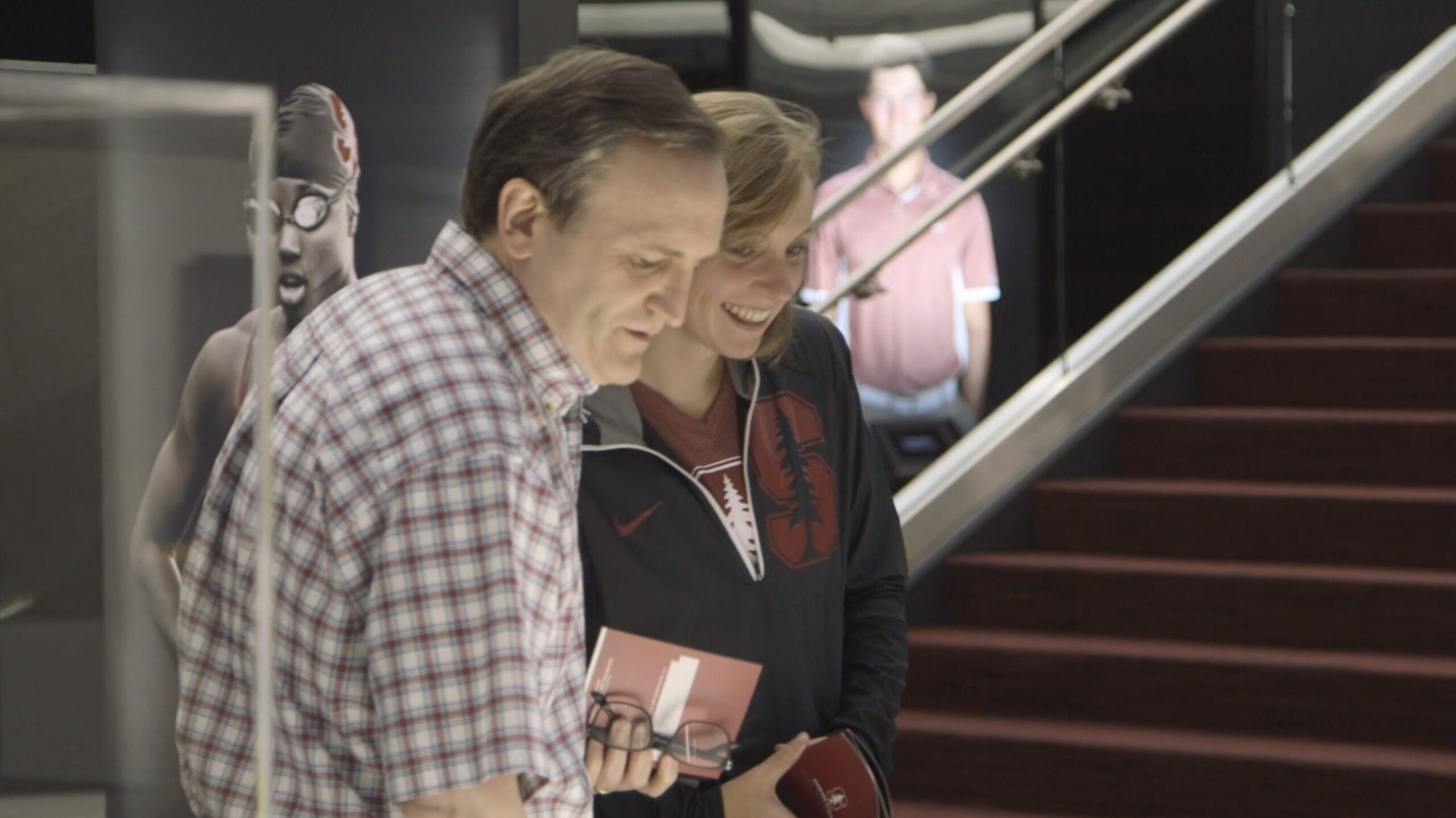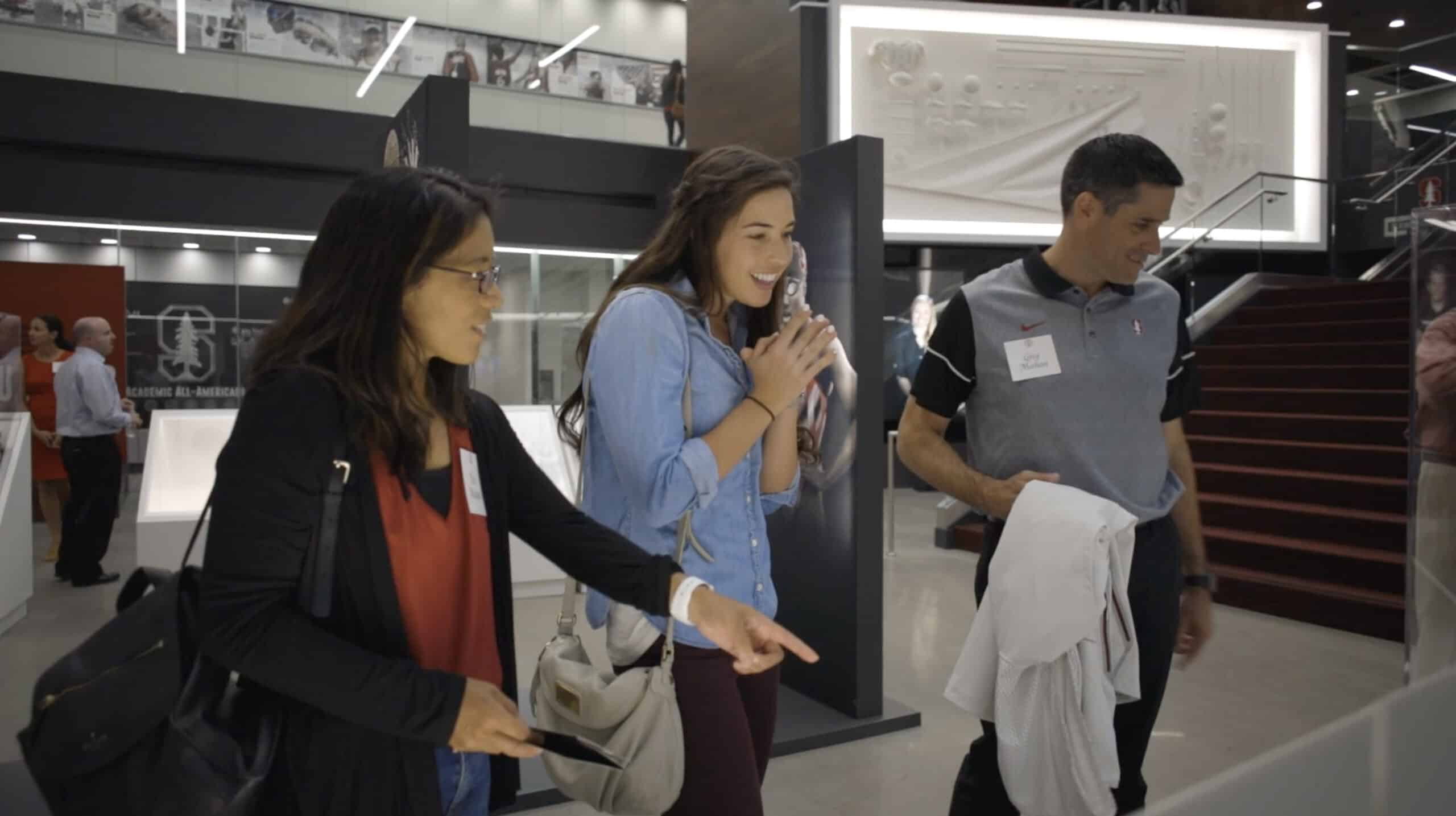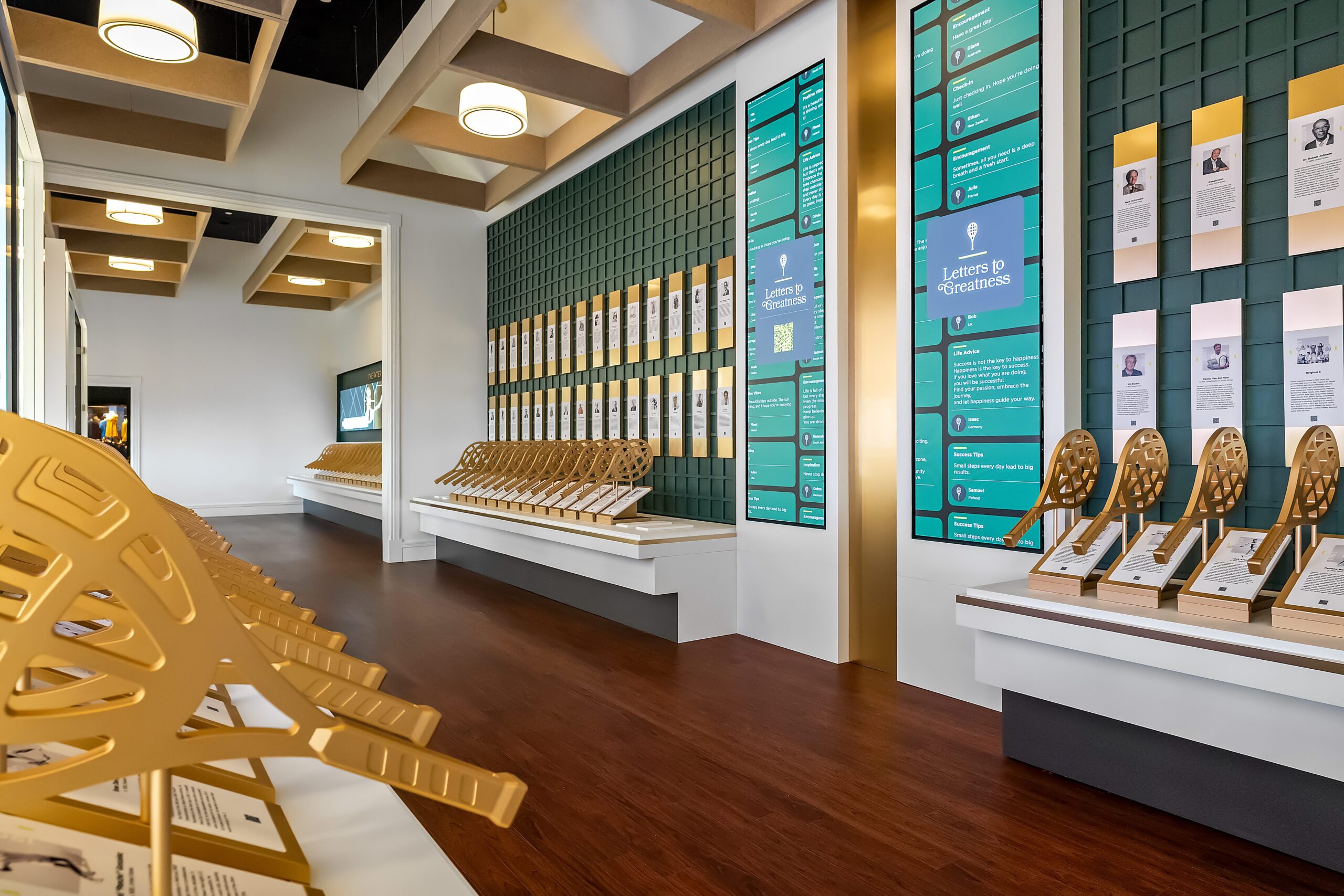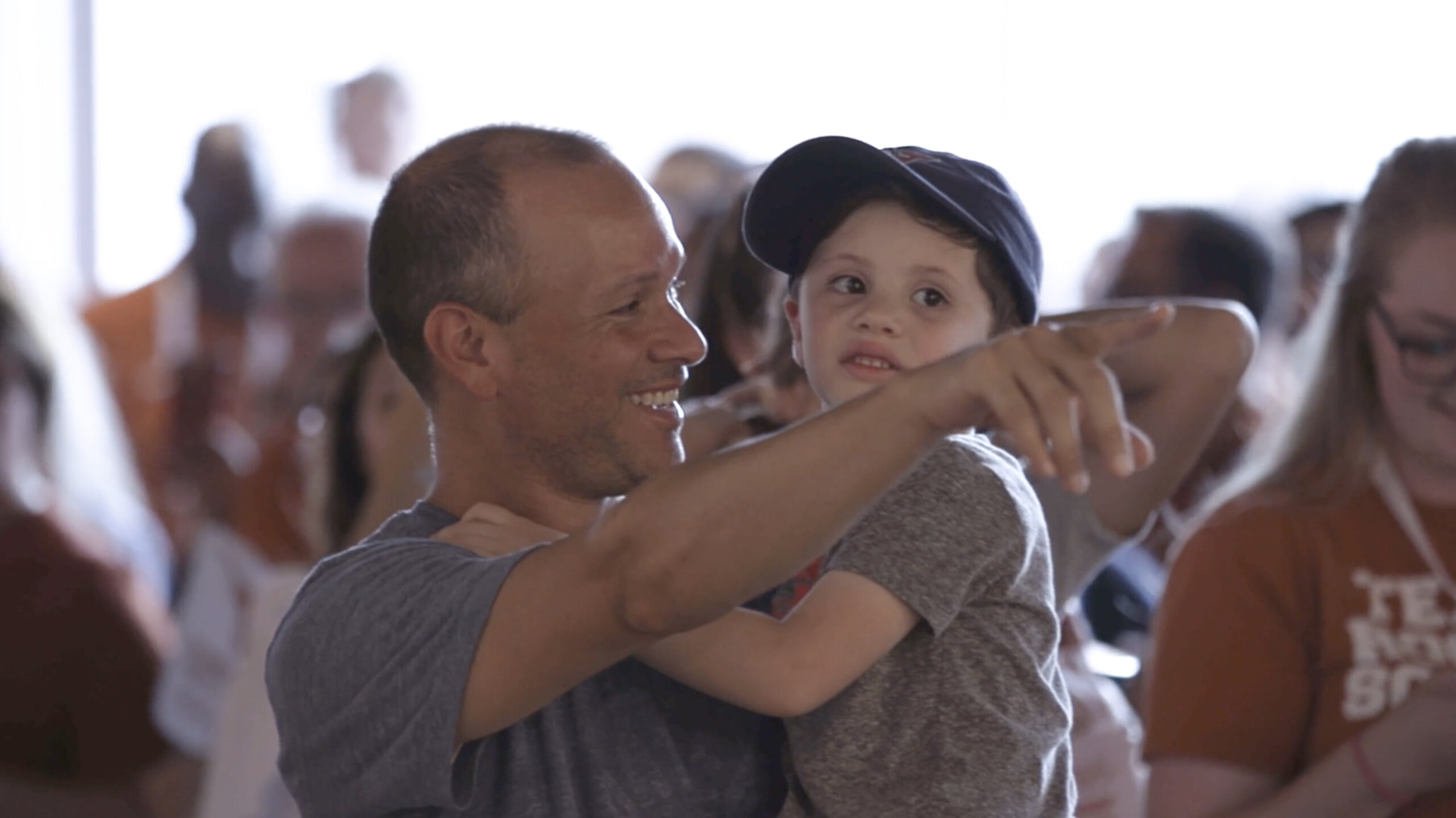Halls of Fame
Thought Leadership
Why Great Halls of Fame Move People
The Psychology of Recognition

Introduction
Walk into any truly great Hall of Fame and you’ll feel it immediately. That visceral catch in your throat. The goosebumps rippling down your arms. The sudden weight of history pressing against your chest. This isn’t decoration. This isn’t nostalgia. This is carefully orchestrated psychology at work, and it’s transforming casual fans into lifelong ambassadors.
We’ve spent years studying why certain spaces move people while others fall flat. The difference between a forgettable trophy case and a Hall of Fame that people travel across the country to visit isn’t budget. It’s understanding the fundamental human psychology of recognition, identity, and belonging.
The Neuroscience of Emotional Connection
When fans step into an exceptional Hall of Fame, their brains light up in ways that MRI studies have shown mirror the activation patterns of personal memory recall. They’re not just seeing artifacts from their team’s history, they’re accessing their own autobiographical timeline.
The championship ring behind the glass? That’s connecting directly to where they were when they watched that game.
The retired jersey? It’s triggering the memory of their father explaining why that player mattered.
This is the power of what psychologists call “autobiographical memory architecture.” Great Hall of Fame design doesn’t just celebrate the team’s story; it creates anchors for fans to locate themselves within that narrative. When people say “I was there,” they’re not just talking about physical presence. They’re claiming ownership of a shared emotional experience.
The financial implications are staggering. Research consistently demonstrates that highly identified fans, those with strong emotional connections to their teams, are significantly more likely to spend greater amounts of time, energy, and resources following their teams than casual observers.
These highly identified fans exhibit greater willingness to invest larger amounts of both time and money to watch their team play, purchase more merchandise, attend more games, and consume more team-related media.
So where do sports organizations and franchises get this wrong? These aren’t separate spending decisions. They’re all expressions of the same psychological need… the desire to belong to something greater than themselves.

Identity Formation Through Collective Memory
Sports fandom operates on a primal level that marketers and brand strategists spend billions trying to replicate. It’s tribal identity formation, and your Hall of Fame is the sacred ground where that identity gets codified and reinforced.
Research in social psychology demonstrates that humans construct their self-concept partly through group membership. When a fan’s sense of self becomes intertwined with their team’s identity, the team’s victories become personal triumphs. The team’s legends become family heroes. And this is where mediocre Halls of Fame fail catastrophically: they present history as static information rather than as living mythology.
Consider the difference between reading a plaque that says “3x Champion, 1,247 career points” versus standing in a space where light, sound, and spatial design combine to make you feel the electric atmosphere of that player’s greatest moment. The first delivers data. The second delivers transcendence.
One informs; the other transforms.
We’ve watched fans stand in front of properly designed exhibits for twenty minutes, sometimes with tears streaming down their faces, and then immediately text photos to family members. They’re not sharing information. They’re sharing an emotional earthquake. And those moments create evangelists who drive ticket sales, merchandise purchases, and the long-term sustainability that every sports organization desperately needs.

The Recognition Paradox
The counterintuitive truth about Hall of Fame investment?
The primary audience isn’t the legends you’re honoring.
It’s every fan who will never be honored.
The psychology of recognition operates on a fascinating paradox. When organizations publicly celebrate excellence, they’re simultaneously validating every person who supports that excellence. By enshrining your legends, you’re telling every fan: “Your devotion to this team matters. Your years of support contribute to something permanent. Your participation in this community has weight.”
This is why budget-conscious Hall of Fame projects that cut corners on emotional impact are so destructive. Every mediocre display subtly communicates that the organization doesn’t value its history enough to present it with excellence.
And if they don’t value their history, why should fans invest their emotional energy in contributing to the future?
Conversely, when organizations, like the Kansas City Chiefs, invest meaningfully in their Hall of Fame, the message resonates differently: “This matters. You matter. What we’re building together is worth preserving.” That message pays dividends for decades through increased fan loyalty, higher lifetime value per customer, and the kind of multigenerational devotion that transforms regional entertainment options into cultural institutions.
We transformed a congested space into a 365-day-a-year revenue generator that engages visitors, school trips, and events through immersive storytelling within the Chiefs’ rich history. The space now showcases every player, every game, and every iconic moment from 65 years of existence implemented for every person to explore their own connection to the franchise.
Designing for Peak Emotional Experience
The architecture of emotion follows specific principles that we’ve refined through years of creating spaces that consistently move people to tears, to laughter, and to renewed commitment.
The Power of Threshold Moments: The transition into your Hall of Fame should create a perceptible shift in atmosphere. Lighting changes. Sound design shifts. The quality of materials elevates. This isn’t pretension; it’s psychology. Our brains need threshold moments to prepare for emotional significance. When people cross from the everyday concourse into a thoughtfully designed Hall of Fame space like Stanford University, their nervous system recognizes: something important lives here.
Layered Storytelling: Surface-level engagement should satisfy the casual visitor, but deeper investigation should reward the devoted fan. This means designing exhibits with multiple depths: the immediate visual impact for the Instagram visitor, the substantive content for the engaged fan, and the hidden details that the superfan discovers on their fifth visit. Each layer builds loyalty and encourages return visits.

Sensory Orchestration: Memory is multisensory. The smell of leather. The echo of crowd noise. The texture of a game-worn jersey under museum-quality glass. The warmth of strategic lighting on memorabilia. When multiple senses engage simultaneously, emotional impact multiplies exponentially. This is why digital-only solutions, while cost-effective, consistently underperform physical installations in emotional resonance testing.
Strategic Pacing: Great Halls of Fame understand rhythm. Moments of high emotional intensity (the game-winning ball, the championship trophy) need to be balanced with spaces for reflection. Triumphant narratives need to acknowledge adversity overcome. Individual excellence needs to be contextualized within team achievement. The emotional journey should feel like a symphony, not a constant fortissimo.

The ROI Nobody Talks About
CFOs want to see the spreadsheet. What’s the return on investing an additional $500K in Hall of Fame design versus spending that money on player salaries or facility upgrades?
The honest answer: you can’t measure transcendence on a quarterly earnings report. But you can track the downstream effects.
Teams with exceptional Halls of Fame create measurably different fan behavior patterns. The International Tennis Hall of Fame presents a compelling case, as featured in the Boston Globe. Beyond honoring legends, its reimagined spaces now generate sustainable revenue through weddings, corporate events, and ceremonies that immerse guests in the sport’s heritage as much as its hospitality. Organizations that invest in this kind of design consistently see a boost and difference in fan and visitor behavior.
The psychological infrastructure of a well-designed Hall of Fame drives increased engagement across multiple revenue streams: stronger season ticket retention, higher merchandise sales, expanded corporate partnership opportunities as businesses seek association with perceived permanence and prestige, and media coverage that shifts from transactional game reporting to feature stories about legacy and culture.
But the most valuable ROI is the hardest to quantify: you’re future-proofing fan loyalty. In an entertainment landscape fracturing into infinite options, creating spaces that deliver emotional experiences unavailable anywhere else is the most powerful competitive moat an organization can build.
Consider what happens during losing seasons. Fans of teams with powerful Hall of Fame experiences maintain engagement because their connection transcends current performance. They’re not just fans of this year’s roster; they’re custodians of a legacy that spans generations. That difference keeps the stadium filled and the merchandise moving even when the team struggles.

The Cost of Getting It Wrong
We need to talk about the Halls of Fame that fail. Not because they lack artifacts or history, but because they lack emotional intelligence in their design.
The generic trophy case approach. The static plaques with dense text. The fluorescent lighting and neglected corners. The spaces that feel like afterthoughts rather than destinations. These aren’t just missed opportunities; they’re actively damaging to brand perception.
When fans encounter a mediocre Hall of Fame, the unconscious message registers clearly: “This organization doesn’t really value what came before.” If the organization doesn’t value its own history, why should fans invest emotionally in being part of the next chapter? The psychological damage compounds over time as fans recalibrate their emotional investment to match the organization’s demonstrated commitment level.
We’ve consulted with teams trying to recover from poorly executed Hall of Fame projects, and the recovery costs are brutal. Not just the financial cost of doing it right the second time, but the reputational cost of having signaled to fans that their passion and loyalty isn’t worth celebrating with excellence.
Building Legacy Architecture
The most successful Hall of Fame projects share a common philosophy: they’re not built for today’s fans. They’re built for fans who haven’t been born yet.
This long-term thinking fundamentally changes design decisions. Materials get chosen for their ability to age with dignity. Display systems get built with flexibility to accommodate future legends. Stories get framed in ways that make space for chapters yet to be written. The entire project becomes an act of institutional confidence: we’re building something meant to matter for the next fifty years.
This confidence is magnetic. It attracts corporate partners looking for associations with permanence. It attracts media coverage that positions the organization as a cultural institution rather than just a sports team. Most importantly, it attracts fans looking for something stable and enduring in an increasingly chaotic world.

The Moment of Decision
Every sports organization eventually faces the Hall of Fame decision. Build something meaningful or settle for something adequate. Invest in emotional architecture or allocate those resources elsewhere.
The teams that choose wisely understand something fundamental: your Hall of Fame is where the past validates the present and finances the future. It’s where casual interest transforms into lifelong devotion. It’s where the intangible value of your brand becomes tangible, touchable, and unforgettable.
We believe the difference between a good Hall of Fame and a great one isn’t complexity, it’s clarity of purpose.
Are you building a museum, or are you building a conversion point that transforms visitors into believers?
Are you documenting history, or are you creating emotional infrastructure that will generate returns for generations?
The psychology of recognition teaches us that humans desperately want to be part of something larger than themselves. They want their devotion acknowledged. They want their memories validated. They want to know that their participation in your team’s story matters.
Your Hall of Fame is your answer to that yearning. Make sure it’s worthy of the question.
At Advent, we specialize in creating fan experiences that transform passive viewers into lifelong brand evangelists. Our Hall of Fame design practice combines psychological research, emotional storytelling, and strategic brand architecture to build spaces that move people—literally and emotionally. Because when you understand what makes people feel something, you unlock what makes them do something.
